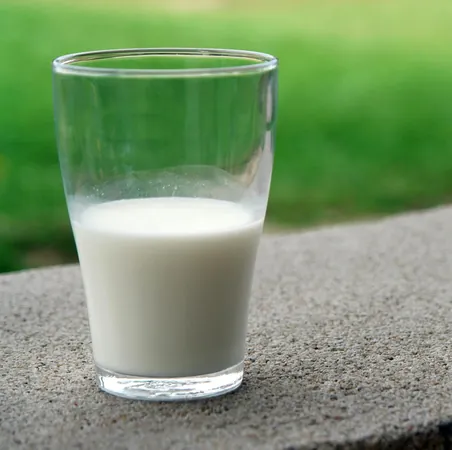
Shocking New Study Reveals Rising Danger of Anaphylaxis from Goat's and Sheep's Milk!
2025-05-13
Author: Daniel
A Hidden Allergy Threat!
A groundbreaking study has unveiled alarming truths about anaphylaxis linked to goat's and sheep's milk, highlighting a potential public health crisis. Surprisingly, the research reveals that two-thirds of individuals with a previous cow’s milk allergy experienced a recovery at the time they faced anaphylaxis from the alternative milks. With the increasing popularity of goat's and sheep's milk in various products, experts warn of a looming rise in anaphylaxis cases.
The Research Unraveled
Conducted by a team led by pediatric specialist Guillaume Pouessel at the Children's Hospital in Roubaix, France, the research sought to dissect cases of anaphylaxis reported by the allergy vigilance network. Between 2002 and 2024, 3,285 food-induced anaphylaxis cases were logged, with an unsettling 97 cases (3.0%) directly tied to goat's and sheep's milk.
Who Is at Risk?
The findings indicate that male individuals were primarily affected, making up 58.8% of the cases. The median age of the affected individuals was 10.5 years, with a staggering 75.3% of incidents occurring in those under 19. Alarmingly, the risk escalates in those with prior allergies; 57.7% had a known allergy to goat's and sheep's milk before their anaphylactic episodes.
Staggering Severity of Reactions
The research also sheds light on the severity of these incidents. A staggering 34.0% experienced grade 3 anaphylaxis, and 4.1% faced grade 4 reactions, including two fatal cases. Compare this to peanut-induced anaphylaxis, where reactions tended to involve younger individuals and a lower rate of asthma.
A Call to Action!
Experts made it clear that healthcare practitioners need to recognize the distinct nature of goat's and sheep's milk anaphylaxis, especially for those recovering from cow's milk allergies. As goat's and sheep's milk find their way into an increasing array of products—from dietary supplements to infant formulas—public awareness and caution is more crucial than ever. The researchers emphasize the need for comprehensive data on goat's and sheep's milk allergies across different countries, prompting potential inclusion in the list of mandatory allergens.
Conclusion: Are We Prepared?
With the rising trend of goat's and sheep's milk consumption, the risks of anaphylaxis are evolving. Understanding the unique characteristics of these allergies is essential for preventing potentially life-threatening reactions. Everyone—from consumers to healthcare professionals—must stay informed and vigilant.



 Brasil (PT)
Brasil (PT)
 Canada (EN)
Canada (EN)
 Chile (ES)
Chile (ES)
 Česko (CS)
Česko (CS)
 대한민국 (KO)
대한민국 (KO)
 España (ES)
España (ES)
 France (FR)
France (FR)
 Hong Kong (EN)
Hong Kong (EN)
 Italia (IT)
Italia (IT)
 日本 (JA)
日本 (JA)
 Magyarország (HU)
Magyarország (HU)
 Norge (NO)
Norge (NO)
 Polska (PL)
Polska (PL)
 Schweiz (DE)
Schweiz (DE)
 Singapore (EN)
Singapore (EN)
 Sverige (SV)
Sverige (SV)
 Suomi (FI)
Suomi (FI)
 Türkiye (TR)
Türkiye (TR)
 الإمارات العربية المتحدة (AR)
الإمارات العربية المتحدة (AR)